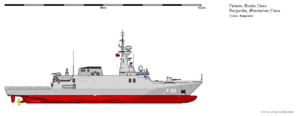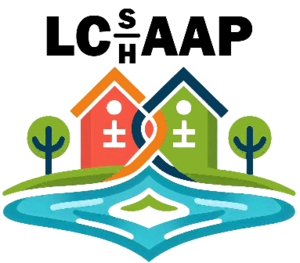Burgo-Pelaxian relations
Burgundie |
Pelaxia |
|---|---|
| Diplomatic mission | |
| Pelaxian Embassy, Vilauristre | Burgoignesc Embassy, Alahuela |
| Envoy | |
| Ambassador TBD | Plenepotentiary Amelia-Lila Heurreng deMortaint |
History
Trade, investment, and economics
Higher Education
Student exchange programs between Burgundie and Pelaxia are a way to foster cultural understanding and academic collaboration. Universities in both countries should sign formal agreements outlining the terms of credit transfer with a system to evaluate and match courses from both institutions to ensure they meet similar academic standards. Students should work with academic advisors to select courses that align with their degree requirements. Here are some key elements that could be included:
Program Structure
Duration: Programs could range from short-term exchanges (a few weeks) to long-term exchanges (a semester or a full academic year).
Eligibility: Open to undergraduate and graduate students from various disciplines, ensuring a diverse mix of participants.
Academic Collaboration
Coursework: Students could enroll in courses at the host institution, allowing them to experience different teaching styles and academic environments.
Credits: Ensuring that credits earned during the exchange are transferable to the home institution to maintain academic progress.
Cultural Immersion
Host Families: Living with host families to provide a deeper cultural immersion experience.
Cultural Activities: Organized trips, cultural workshops, and language classes to help students understand and appreciate the host country’s culture.
Support Services
Orientation Programs: Pre-departure and on-site orientations to help students adjust to their new environment.
Mentorship: Pairing exchange students with local mentors or buddies to provide guidance and support.
Benefits
Personal Growth: Enhancing students’ global awareness, adaptability, and intercultural communication skills.
Academic Enrichment: Exposure to new academic perspectives and research opportunities.
Networking: Building international friendships and professional connections.
Scholarships
Merit-Based Scholarships aim to reward academic excellence and outstanding achievements. These scholarships are available to students who demonstrate high academic performance, exceptional talents, or significant accomplishments in specific fields. Recipients benefit from full or partial tuition coverage, stipends for living expenses, and additional funds for research or projects. Examples include Academic Excellence Scholarships and Talent Scholarships for arts, sports, and other areas. Need-Based Scholarships focus on providing financial assistance to students from low-income backgrounds. Eligibility is determined by assessing family income and other economic factors. These scholarships offer full or partial tuition coverage, living stipends, and support for educational materials. Examples include Financial Aid Scholarships and Access Scholarships.
Exchanges
Short-Term Exchange Programs provide students with brief, immersive experiences in different academic and cultural environments. These programs typically last from a few weeks to a few months and involve attending classes, participating in cultural activities, and engaging in short-term research projects. Examples include Summer Exchange Programs and Cultural Immersion Programs.
Long-Term Exchange Programs offer students an extended period of study abroad, allowing for deeper academic and cultural integration. These programs can last from one semester to a full academic year. Activities include enrolling in courses at the host institution, conducting research, and participating in extracurricular activities. Examples include Semester Exchange Programs and Year-Long Exchange Programs.
Tourism
Military and inter-governmental initiatives
DDC-X18

In January of 2015, the Navy of Burgundie and the Pelaxian Navy, put out a requirement for a jointly developed and produced warship that could serve as either a corvette and an aviso. The requirement specified that any submission must have included a design team compromising of naval architects from both countries. In 2016, the final design for the corvette was chosen and ship builders from both countries were given contracts to produce the ships. The first ships were completed in December 2018, only 9 months behind schedule. The remaining ships were delivered from 2019-2026.
From 2018 through 2020, the ships were sailed and exercised by both Navies in a bilateral taskforce in the Kindreds and Tainean Seas in a Joint-Extended Warship Strategy Development and Integration Determination and Initiation Trial (JEWSDIDIT). They jointly trained on the ships, equipment, and electronics, as well as trialing different mission sets and capabilities of the ships.
SND Lagarto

The SND VMP (Modular Personnel Vehicle ) is an 8×8 multi-role military vehicle produced by the Pelaxian defence industry company SND.
The main feature of the Lagarto is its modular design, which allows the incorporation of different turrets, weapons, sensors, or communications systems on the same carriage. Designs exist for different APC vehicles (armoured personnel carrier) and IFV versions (infantry fighting vehicle), communications versions, ambulances and different fire support versions, armed with large caliber mortar and gun systems.
The vehicle has a very good level of mine protection and can withstand explosions of up to 10 kilograms (22 lb) TNT. The Lagarto has protection levels up to 30mm APFSDS frontal arc. Another important feature is the very good mobility (combining speed, agility, and crew comfort) in rough terrain, enabled by the sophisticated but rugged hydropneumatic suspension adjusting each wheel individually.
The Lagarto stems from an investigation, made by the Pealxian Army HQ in 1995, on different armored vehicle concepts for an all branches modular vehicle platform. In 1996, SND Vehicles began to develop different concept vehicles, and found the 8×8 one to be most suitable as a replacement for their 6×6 Urutu, BMR Pegaso and Bryn APC.
The Pelaxian Armed Forces ordered an official concept study in 1999, which was ready by 2000. SND continued to develop the vehicle and the first Lagarto prototype was ready for testing in November 2001. Two evaluation samples were ordered by the PAF in December 2001, and were delivered in 2003. Later the same year, the Army ordered 24 AMOS-equipped Lagarto for delivery 2006–09. The PAF also said that they were looking to order some 1000 APC units, equipped with remote-controlled weapon stations, later placing an order for 620 IFV variants only. In 2004, the Lagarto became the first 4th generation combat vehicle of its kind to enter serial production.
In December 2011 the Pelaxian Army placed an order for 500 units of the VMP APC variant and 150 units of the FSV variant.
The design was based on experience gained from building the Urutu and on customer feedback on that vehicle. It was entirely designed in 3D virtual environments before construction and subsequent successful testing of the prototype showed that it fulfilled all the expectations.
The vehicle was initially designed in 6×6, 8×8 and 10×10 variants, but the 10×10 variant was later dropped.

The Kindred's Naval School is a bilateral officer's program that aims to develop the next generation of naval officers with a strong foundation in leadership, strategic thinking, and maritime operations. The academy focuses on fostering international cooperation and understanding among naval forces of Pelaxia and Burgundie.
Program Highlights
Comprehensive Curriculum:
Leadership Training: Courses on leadership principles, decision-making, and crisis management.
Maritime Strategy: In-depth studies on naval strategy, maritime security, and international maritime law.
Technical Skills: Training in navigation, engineering, and modern naval technologies.
International Collaboration:
Exchange Programs: Opportunities for officers to train with allied navies and participate in joint exercises.
Guest Lectures: Insights from renowned naval leaders and experts from around the world.
Cultural Exchange: Programs designed to promote cultural understanding and cooperation among officers from different countries.
Advanced Facilities:
Simulation Centers: State-of-the-art simulators for realistic training scenarios.
Research Labs: Facilities for conducting cutting-edge research in maritime technology and strategy.
Training Vessels: Access to a fleet of training ships for hands-on experience.
Career Development:
Mentorship Programs: Guidance from experienced naval officers and leaders.
Networking Opportunities: Building connections with peers and leaders in the global maritime community.
Certification: Recognized certifications and qualifications to enhance career prospects.
Community and Support:
Alumni Network: A strong network of graduates who continue to support each other throughout their careers.
Support Services: Comprehensive support for personal and professional development.
Inter-arm/Allied Strategic Review Program
The Inter-arm/Allied Strategic Review Program is an annual event held at the Burgoignesc War College of Pelaxian and Burgoignesc Junior Officers to review recent commitments of both countries and recommend changes or updates to strategy and policy.
Diplomacy
Sister/twinned cities

- Agrila and Stearlinge Arch since 1973, LSCAPP since 1997
- Abalitor and Port Diteaux since 1954, LSCAPP since 1999
- Fuentealba and Bergemiers since 1962, LSCAPP since 1999
Common memberships
- League of Nations
- World Health Organization
- International Monetary Fund
- World Trade Organization
- United Nations Educational, Scientific and Cultural Organization
- International Atomic Energy Agency
- International Civil Aviation Organization
- International Criminal Court
- International Red Cross Committee
- World Intellectual Property Organization
- World Food Programme
Culture
See also